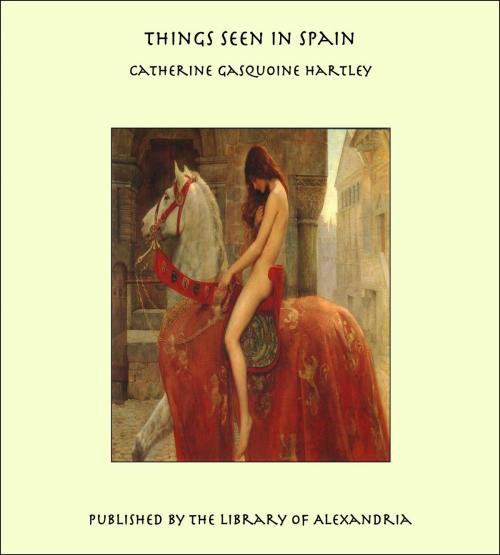| Author: | Catherine Gasquoine Hartley | ISBN: | 9781465543943 |
| Publisher: | Library of Alexandria | Publication: | March 8, 2015 |
| Imprint: | Language: | English |
| Author: | Catherine Gasquoine Hartley |
| ISBN: | 9781465543943 |
| Publisher: | Library of Alexandria |
| Publication: | March 8, 2015 |
| Imprint: | |
| Language: | English |
THE FASCINATION OF SPAIN Spain the Home of Romance—The Conservatism of the People—Spain the most Democratic of Countries—The Tradition of Chivalry—The Cid—Spain the Connecting Link between Europe and Africa—The Place of the Moor in the Country To-day—The Gardens of Granada—The Bull-fight: its National Importance—Spanish Dancing. Coming into Spain by any of the chief portals—at Port Bou, at Algeciras, or at Irun—one finds oneself in a totally new country. You cast much behind you as you come, for instance, from France; you will be impressed by a certain strangeness of aspect far different from all you have learnt to expect in other countries. You will feel transplanted back into another world. It is as if Spain had sat aside waiting, indifferent and proud, while elsewhere life has rushed onwards. The conservatism of Spain may be gathered from the old impressions we find in the pages of writers describing the people and the country of more than a century ago, which are still true in so much as they refer to what is essential in the national spirit, and to the survival of the customs of mediæval Europe. “I regard the Spanish people,” says Stendhal, “as the living representatives of the Middle Ages.” Spain is still the home of the romance which belonged to an age that has passed. And although the more flourishing Spanish towns are nowadays full of animation—factories are springing up and signs of commercial activity are not wanting—this new movement of progress has not destroyed this romance. The Spain which Cervantes immortalized still lives. We may still take Don Quixote and Sancho Panza as typical figures, whom you may see any day in the towns of Castile or walking on the roads of La Mancha. These are the types that have remained unchanged
THE FASCINATION OF SPAIN Spain the Home of Romance—The Conservatism of the People—Spain the most Democratic of Countries—The Tradition of Chivalry—The Cid—Spain the Connecting Link between Europe and Africa—The Place of the Moor in the Country To-day—The Gardens of Granada—The Bull-fight: its National Importance—Spanish Dancing. Coming into Spain by any of the chief portals—at Port Bou, at Algeciras, or at Irun—one finds oneself in a totally new country. You cast much behind you as you come, for instance, from France; you will be impressed by a certain strangeness of aspect far different from all you have learnt to expect in other countries. You will feel transplanted back into another world. It is as if Spain had sat aside waiting, indifferent and proud, while elsewhere life has rushed onwards. The conservatism of Spain may be gathered from the old impressions we find in the pages of writers describing the people and the country of more than a century ago, which are still true in so much as they refer to what is essential in the national spirit, and to the survival of the customs of mediæval Europe. “I regard the Spanish people,” says Stendhal, “as the living representatives of the Middle Ages.” Spain is still the home of the romance which belonged to an age that has passed. And although the more flourishing Spanish towns are nowadays full of animation—factories are springing up and signs of commercial activity are not wanting—this new movement of progress has not destroyed this romance. The Spain which Cervantes immortalized still lives. We may still take Don Quixote and Sancho Panza as typical figures, whom you may see any day in the towns of Castile or walking on the roads of La Mancha. These are the types that have remained unchanged















